At the Canadian Canoe Museum, author and executive director James Raffan has little use for unrefined aluminum canoes. “Canoe trippers love to malign aluminum canoes,” he says. Yet, if you put aesthetics aside the humble Grumman aluminum canoe was a trailblazer in canoeing history, opening up new horizons for adventurers and recreational paddlers alike.
Why aluminum canoes aren’t so easy to love
As Raffan guides visitors around the museum, slides of his perennial-filled Grumman planter and the ice-flattened “aluminum hulk” he found washed up on the shores of the Coppermine River elicit chuckles and guffaws. “The photo of the planter always gets a laugh when I say this is the best use I’ve found so far for a Grumman canoe,” says Raffan.
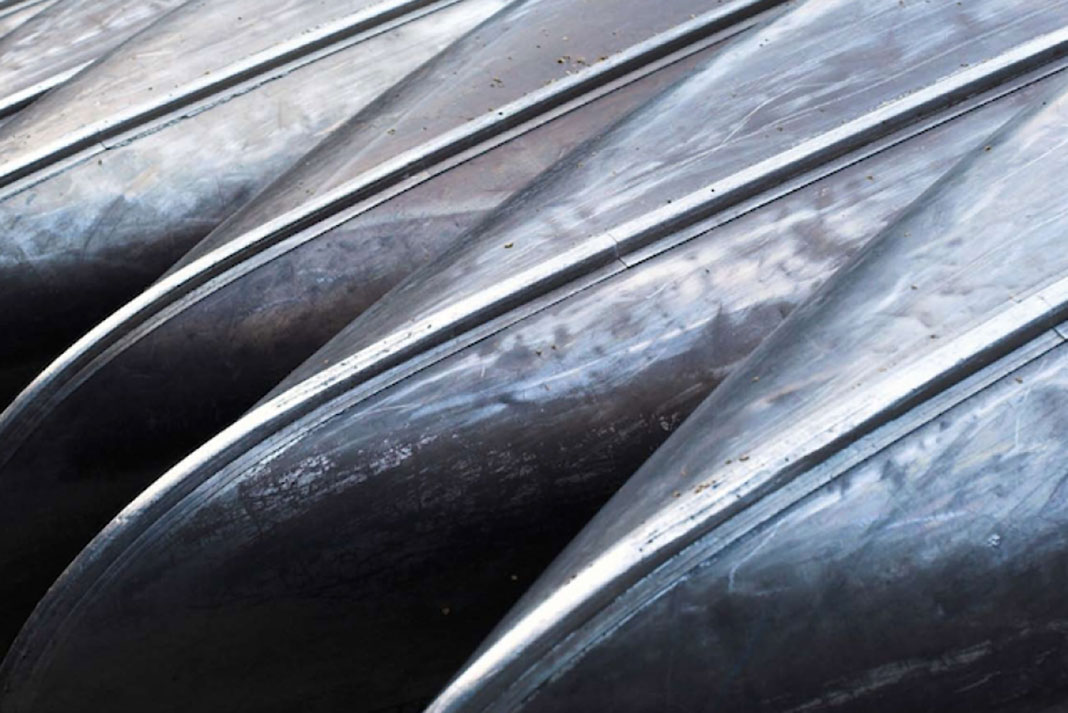
The aluminum canoe’s lack of refinement makes it an ideal target for verbal abuse. Aluminum canoes are obnoxiously noisy, numbingly cold and leave hands and paddle shaft coated with a metallic tinge of aluminum oxide. Despite its pitfalls, it can be argued that the hapless, American-made aluminum canoe did far more for the popularity of recreational canoeing around the world than stuffy museum-worthy specimens of cedar and canvas.
How the Grumman canoe found its niche
The Grumman was the first true recreational canoe. It’s maintenance-free, stable, user-friendly and relatively cheap. Its lifespan is virtually unlimited, and it can be stored on sawhorses behind the garage or on the ground beneath a snowdrift.
It typically takes only brute force and liquid solder to return it to a reasonable likeness of its original form.
Should a Grumman get damaged—either pinned by a mid-rapid boulder or crushed by a fallen tree—it typically takes only brute force and liquid solder to return it to a reasonable likeness of its original form. As much as many canoeists would hate to admit it, “truth is that aluminum canoes float just as well as any other, they are seriously durable and, in the case of Grummans, have quite elegant lines,” concedes Raffan.
From fighter planes to aluminum canoes
In the beginning, canoe building was a novelty sideline for the Grumman Aircraft Engineering Corporation, which was the world’s largest producer of World War II aircraft carrier-based fighter planes.
In 1944, Grumman vice president William Hoffman came up with the idea of a lightweight, stretch-formed aluminum canoe—after lugging a waterlogged wood-canvas canoe across one too many portages on a fishing trip in New York’s Adirondack Mountains. A year later, Grumman’s Long Island aircraft plant produced its first canoe: A 13-footer said to weigh 30 per cent less than a comparable wooden canoe.
“Grumman learned to bend and rivet flat sheets of aluminum into elegant, complex curves as a result of making aircraft wings and fuselages,” explains Raffan. The process of using panels of hand-riveted, stretchformed aluminum alloy translated ideally to canoe construction.
Shortly after Hoffman’s personal canoe was built, there came lines of 13-, 15-, 17-, 18-, 19- and 20-foot canoes. Grumman quickly captured market share based on their durability, reasonable weight and no-fuss maintenance.
Grummans were once the boat to beat
In the 1970s, former Grumman employee and veteran marathon canoeist Dale Fox says the company employed 200 canoe builders and turned out 50 canoes per day. Fox, who now crafts FoxWorx canoe and kayak paddles in Bainbridge, New York, had only been in a canoe once before he took the job of turning gossamer sheets of stretched aluminum skin into canoes with a drill press, rivets and hammer. He picked up marathon canoe racing shortly thereafter, and remembers a time when 18-foot Grumman Lightweights were the boat to beat in New York’s General Clinton Canoe Regatta—a 70-mile race in Bainbridge.
Aluminum canoes were equally capable wilderness trippers. Eric Morse, known to history as the first to popularize the notion of long-distance canoe tripping in the Canadian arctic in the 1960s, paddled a 17-foot Grumman on many of his explorations of the Far North. Bill Mason, the famed canoeist and filmmaker most noted for his rapt love for traditional wood and canvas Chestnut canoes, called the aesthetics of aluminum canoes “the pits,” their handling “sluggish [and] noisy.” Still, he chose a Grumman nicknamed the Queen Mary for family trips on the French River, Georgian Bay and Lake Superior, and paddled aluminum on his first trip down the Northwest Territories’ South Nahanni River.
Similarly, Raffan remembers guiding Black Feather trips in the 1970s on Arctic rivers in aluminum canoes and went on to outfit the outdoor education program at Queen’s University with a fleet of Grummans. Fox says most canoeists still have a Grumman in their backyards, which serve as indestructible memories of their paddling past.
Grumman has an undeniable place in canoe history
This is perhaps the aluminum canoe’s ultimate legacy: Long after the last cedar-ribbed Prospector rots to pulp, aluminum canoes will still be going strong. Archeologists will unearth Raffan’s aluminum planter, pry, lever and patch his river-worn wreck back into shape, and future generations will enjoy the wonders of canoeing.
The Grumman canoe may not be glamorous, but it’s maintenance-free, stable, user-friendly, relatively cheap and nearly indestructible. | Feature Photo: iStock



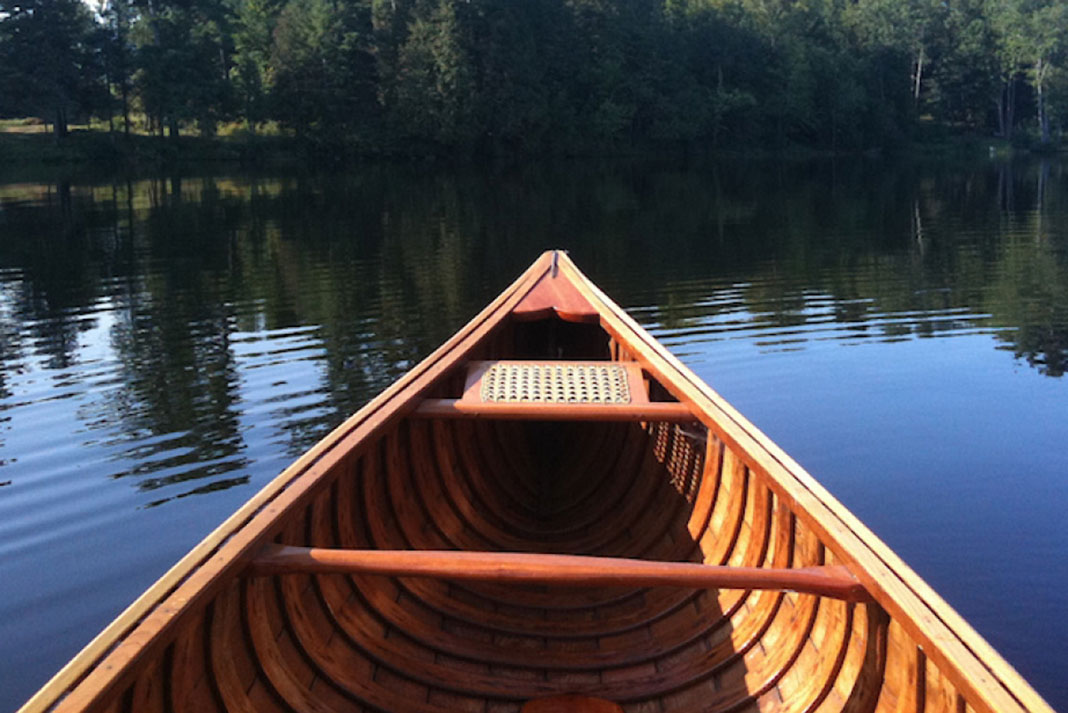

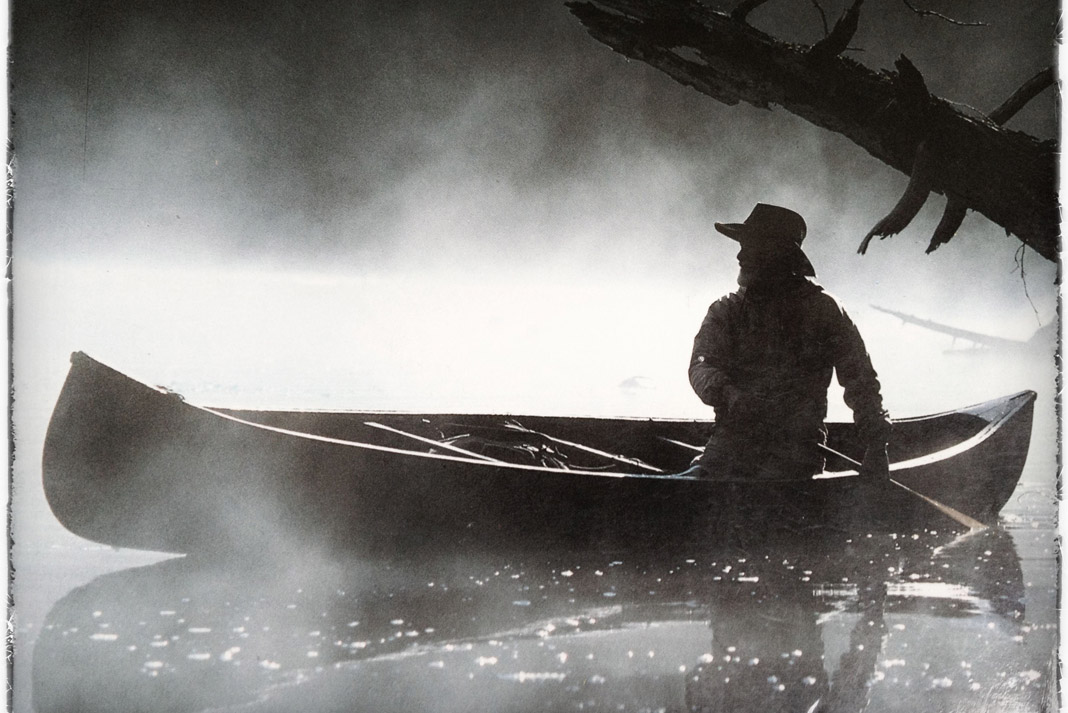
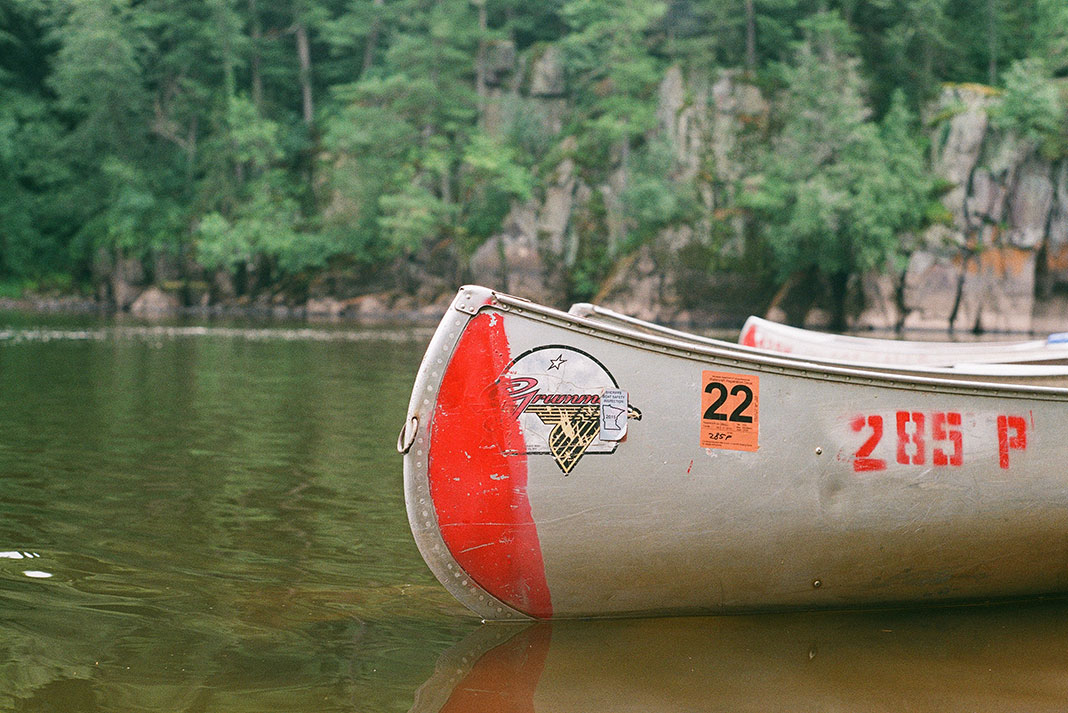
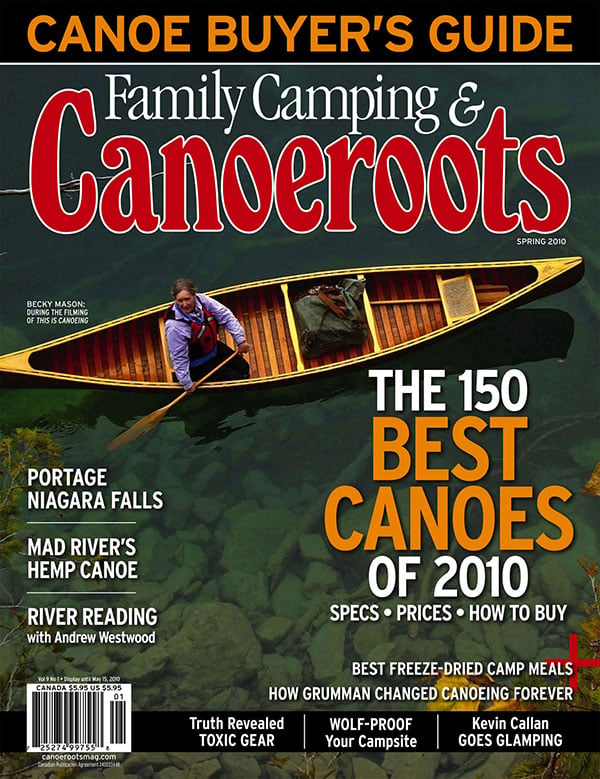 This article was first published in the Spring 2010 issue of Canoeroots Magazine.
This article was first published in the Spring 2010 issue of Canoeroots Magazine. 



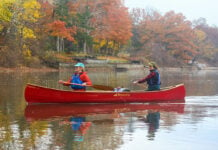

I cut my whitewater teeth in an aluminum canoe and soon learned to smell rocks at 50 yards and avoid them like the plague. I still have my 1973 5′ aluminum Sears canoe but mostly paddle Royalex these days. I’m often asked how I can tolerate low water, “scrapey” conditions, to which query I respond somewhat puzzledly, “I didn’t hit anything.”
Edit: My last comment should have read “…1973 15′ aluminum canoe…” amd might appropriately end with smiling emoji. 🙂
I grew up tripping in Aluminum Canoes. I recently purchased an 18′ Grumman and I am in love again. They really are a very functional craft.
I had a fiberglass Grumman with wood thwarts, seats, and gunnels. At 80 pounds it was a behemoth. They must not have made very many.
Another use for canoes (Alas; my much beloved, Grumman 17′ was stolen from its “safe storage space” in my backyard a number of years ago) which might not occur to every canoeist is that they make excellent coolers for large parties when filled with ice and various libations.
Cheers, Bill
I have a G-17 with a “8584” serial number…I got it in the mid 80’s at a garage sale where it was described as a worn out Boy Scout canoe. Do you have any idea how old it is?
It looks like it predates and current serial number system.